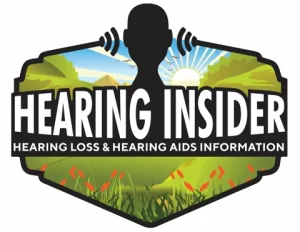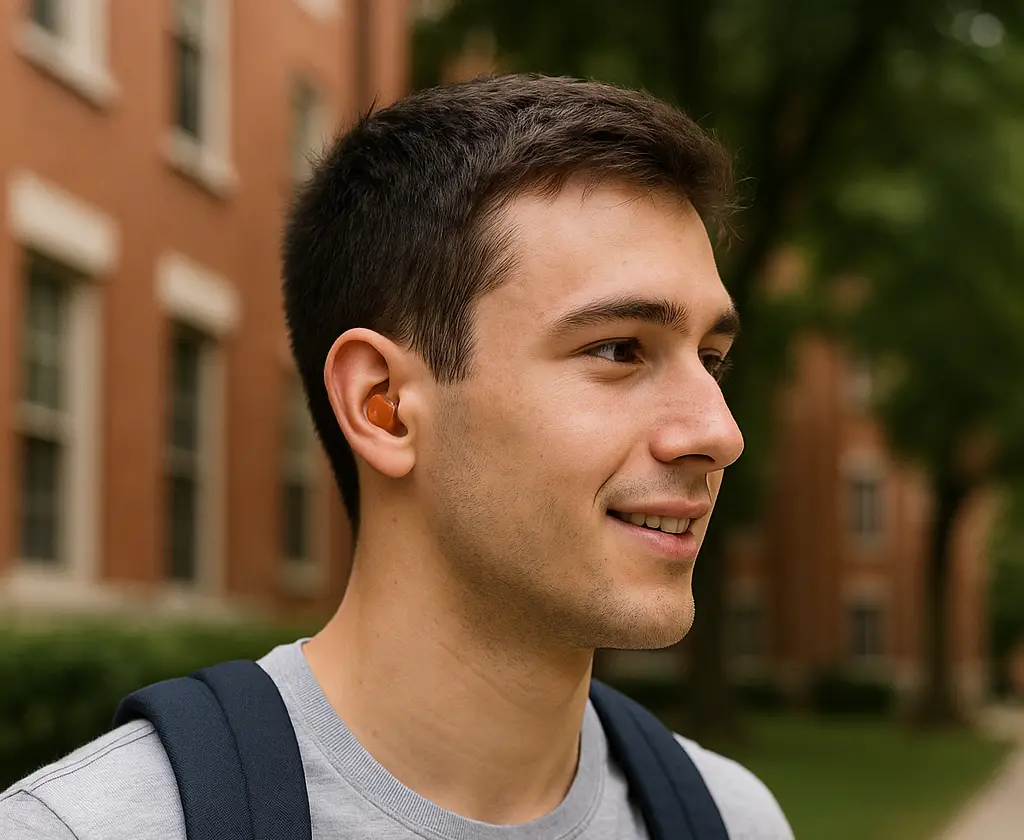Empowering advice and uplifting truths for hearing aid users ready to ditch the stigma and embrace their tech with pride.
Understanding the Roots of Hearing Aid Stigma
Let’s be real—hearing aids haven’t always had the best reputation. For decades, they were associated with aging or “something to hide.” That outdated thinking still lingers in some corners, but it’s rapidly changing.
Much of the stigma comes from the invisibility of hearing loss. Unlike glasses, hearing loss isn’t immediately obvious. So when someone sees a hearing aid, it can catch them off guard—especially if they still associate hearing aids with grandparents or nursing homes. But just like glasses, hearing aids are a tool, not a label. For basics on styles and features, see Everything to Know About Hearing Aids.
You’re Not Alone – Hearing Aid Use Is More Common Than Ever
Here’s some comforting news: more people are using hearing aids than ever before. Millions of adults—young and old—are choosing to treat hearing loss early because they realize better hearing = better life. From deeper relationships to improved mental health and job performance, the benefits are too powerful to ignore.
And the idea that only “old people” wear hearing aids? That’s a myth. Today, working professionals, athletes, and students all proudly wear hearing aids. For a quick overview of manufacturers and product families, visit our guide to the Global Manufacturers of Hearing Aids. For general prevalence stats, the NIDCD has a helpful primer (external).
From Medical Device to Cool Tech – Rethinking Hearing Aids
Today’s devices aren’t your grandparents’ clunky beige models. They’re smart wearables with Bluetooth streaming, directional microphones, rechargeable batteries, and AI-based noise processing. Some models—like the sleek Phonak Audeo Slim—blend fashion and function. Others, such as Invisible-in-Canal (IIC) devices, fit deep in the ear and are virtually undetectable.
Want to lean into the tech vibe? Pick glossy white or matte black to mimic wireless earbuds. Want discretion? Color-match your hair or skin tone. If you’re deciding between in-the-ear vs. behind-the-ear designs, start with our comparison of ITE vs. BTE Hearing Aids.
Choosing Discreet or Stylish Options to Match Your Personality
- Phonak Audeo Slim – slim, rechargeable, and stylish.
- IIC Hearing Aids – completely hidden for ultimate discretion.
- Colorful shells – choose fun metallics or bold hues.
- Bluetooth-compatible models – double as wireless headphones for calls and media.
By choosing a device that feels like “you,” you’re more likely to wear it with pride—and less self-consciousness. If you’re still exploring options (including OTC), see our Best FDA-Approved OTC Hearing Aids roundup.
Tips to Build Confidence While Wearing Hearing Aids
- Practice at home – Get used to the sound and feel before going out.
- Use a mirror – Normalize your new look and notice how subtle they appear.
- Positive body language – Stand tall, smile, and make eye contact—confidence is contagious.
- Keep a response ready – Try: “They help me hear the world better.” Simple and strong.
- Celebrate small wins – The first time you hear birds clearly or follow every word at dinner—those moments matter.
If you’re new to amplification, our guide on Hearing Aid Adjustment Time explains what to expect in the first few weeks.
Talking About Your Hearing Aids with Others
You don’t owe anyone an explanation—but sharing can be empowering. Consider phrases like:
- “They’re like my second set of ears.”
- “These are smarter than my phone.”
- “They let me live my life without missing a thing.”
Many people are curious and supportive once they understand how life-changing hearing aids can be. If tech questions come up, point them to our Best Hearing Aids for Background Noise explainer.
Mental Health and the Emotional Journey of Hearing Loss
Feeling nervous or embarrassed is natural—especially if this is your first time using hearing aids. Many users go through a period of grief, frustration, or anxiety. That’s okay. Acknowledge the feelings, but don’t let them stop your progress. Talk to a therapist, join a support group, or open up to loved ones.
Accepting your hearing aids is part of accepting yourself. There’s nothing weak about that—it’s brave, beautiful, and deeply human. If emotions are affecting use, your audiologist can also fine-tune settings (see Ask the Audiologist: Settings We Can Adjust).
Myths vs. Facts: Debunking Common Misconceptions
| Myth | Reality |
|---|---|
| “Only old people wear hearing aids.” | People of all ages wear them—even kids and teens. |
| “They make you look broken.” | They show you care about health and connection. |
| “They’re ugly or outdated.” | Today’s models are stylish, sleek, and tech-forward. |
| “People will judge me.” | Most won’t notice—and many admire your confidence. |
Stories from Real People
Maya, 27, marketing executive: “I wore them only at home at first. Then I got black Audeo Slims—people thought they were earbuds. That boosted me. Now I wear them everywhere.”
Tyler, 19, college student: “I was nervous starting college with hearing aids. Once I explained them to my roommate, he was supportive. I even started a campus group.”
Sam, 45, musician: “I worried they’d ruin my sound. Instead, streaming and fine-tuning improved my mixes.”
Embracing Hearing Aids as Empowering Tools
Hearing aids are miniature marvels of modern engineering—advanced algorithms, adaptive microphones, and AI helping you hear in real time. Think of them like performance gear for your brain. You’re using technology to enhance your experience of the world. That’s something to celebrate.
Support Systems and Online Communities
- r/hearingaids on Reddit – open discussions with users worldwide.
- Facebook groups – there are many facebook groups. Some for each brand of hearing aids and other for general hearing loss. Pro Tip is to join a private group so when you post something it will not be shown to all of your friends.
Many users find that reading others’ experiences eases their own fears. Community is powerful—lean in.
Role of Audiologists in Building Confidence
Your audiologist is more than a device provider—they’re a partner in your hearing health. They can help you pick the right model, customize settings (compression, noise reduction, directional mics, frequency lowering), and coach you through tricky listening situations. Learn more about what can be tuned in What Settings Can My Audiologist Adjust?
Having trouble with sound cutting out or fit comfort? See our troubleshooting hub: Hearing Aids Cutting In and Out.
Tips for First-Time Users
- Start slow: Wear them at home or during quiet times first.
- Journal your experience: Note what you hear, what feels odd, and what you enjoy.
- Adjust gradually: Your brain needs time—results improve over weeks.
- Be patient: Feeling awkward passes with practice.
- Ask for help: Friends, audiologists, and forums are there for you.
Not sure which style suits your life best? Try our guide to hearing aid styles.
Kids and Teens: Navigating Social Settings
- Advocate: Join school groups or hearing-loss organizations.
- Talk to teachers early: Share what helps (seating, captions, FM systems).
- Wear them with confidence: When you treat them like no big deal, others usually do too.
- Find role models: Look to athletes, creators, and leaders who amplify with pride.
For unilateral losses or complex situations, read our guide to CROS and BiCROS Hearing Aids.
Embracing the Future: Hearing Aids as Wearable Tech
The category is moving fast: AI scene analysis, hands-free calling, Bluetooth LE Audio, Auracast™ broadcasts, and health tracking are here or coming. You’re not behind the times—you’re ahead. Before travel or big events, check our tips for Vacationing with Hearing Aids.
Conclusion: Celebrate Your Hearing Journey
Wearing hearing aids isn’t something to hide—it’s something to honor. You’ve embraced cutting-edge tech and chosen connection over isolation. Whether your devices are invisible or bold, what matters most is that they work for you. Walk into every room with your head high. Smile when someone asks. You’re not just hearing the world—you’re reclaiming it.
Frequently Asked Questions (FAQs)
1) Will people notice my hearing aids?
Not usually. Today’s devices are sleek and discreet—many are invisible or look like regular earbuds.
2) Are hearing aids only for older adults?
No. People of all ages use hearing aids, including children, teens, and young professionals.
3) What if I feel self-conscious at work or school?
Communicate openly and confidently. Share what helps (captioning, seating). You might be surprised how supportive others are.
4) Can hearing aids really look like earbuds?
Yes. Many models come in modern colors and slim designs. See our overview of ITE vs. BTE for style direction.
5) Are there online groups where I can talk to other users?
Definitely—try Reddit’s r/hearingaids, and Private Facebook groups.
6) How can I feel more confident wearing hearing aids in public?
Start slow, find your community, and remember: choosing better hearing is a powerful act of self-care. If issues arise, check our troubleshooting tips.

